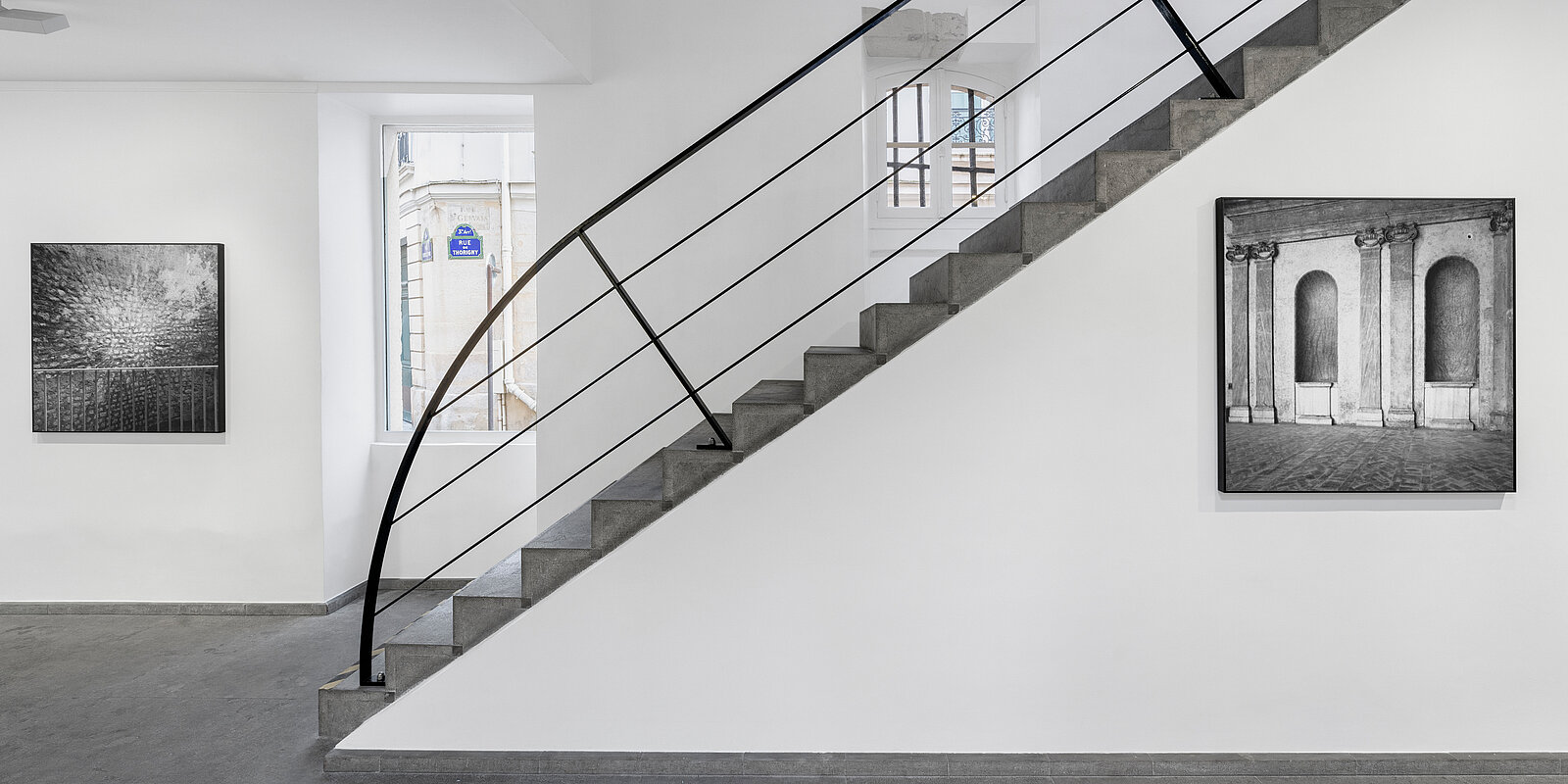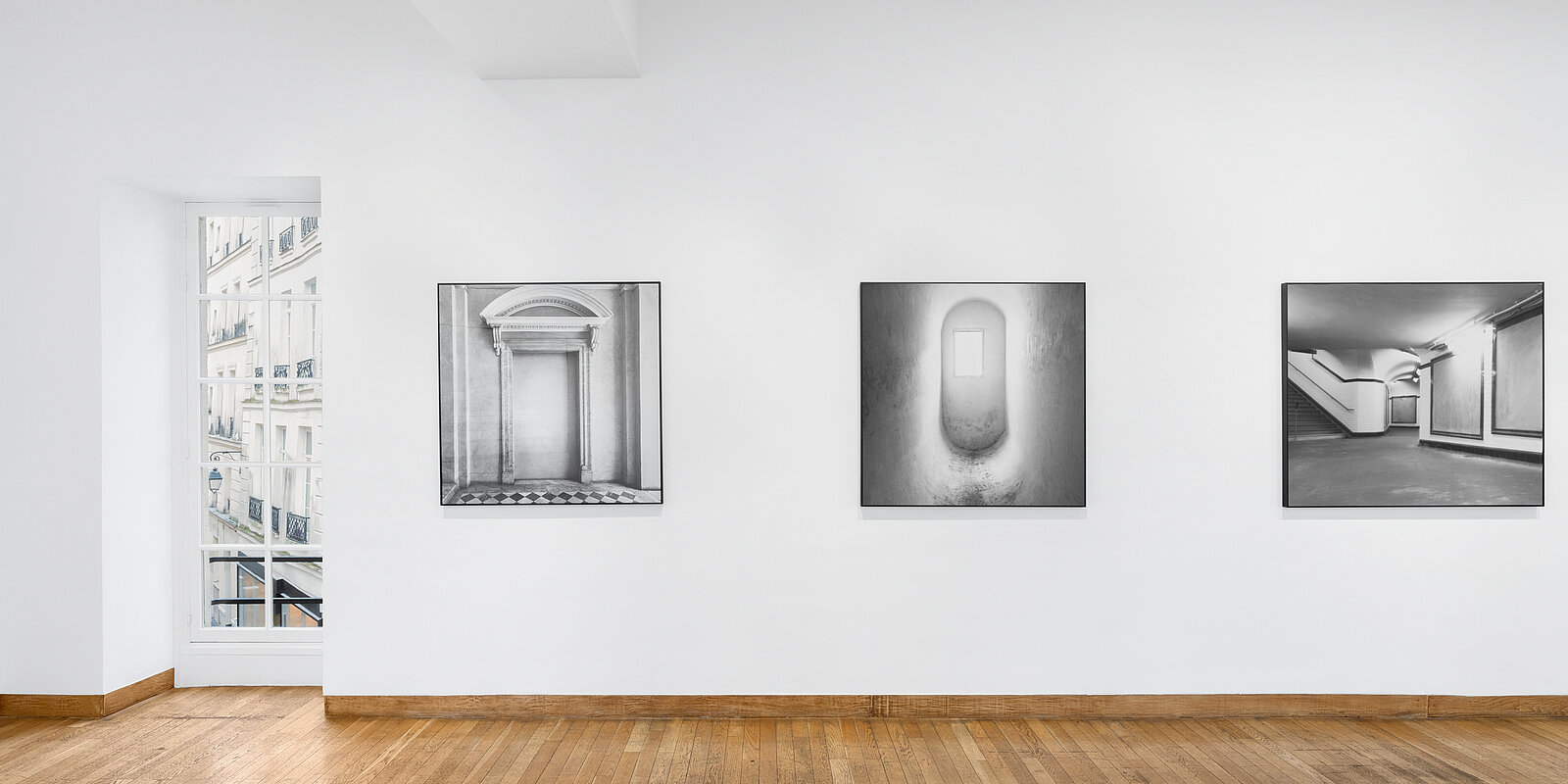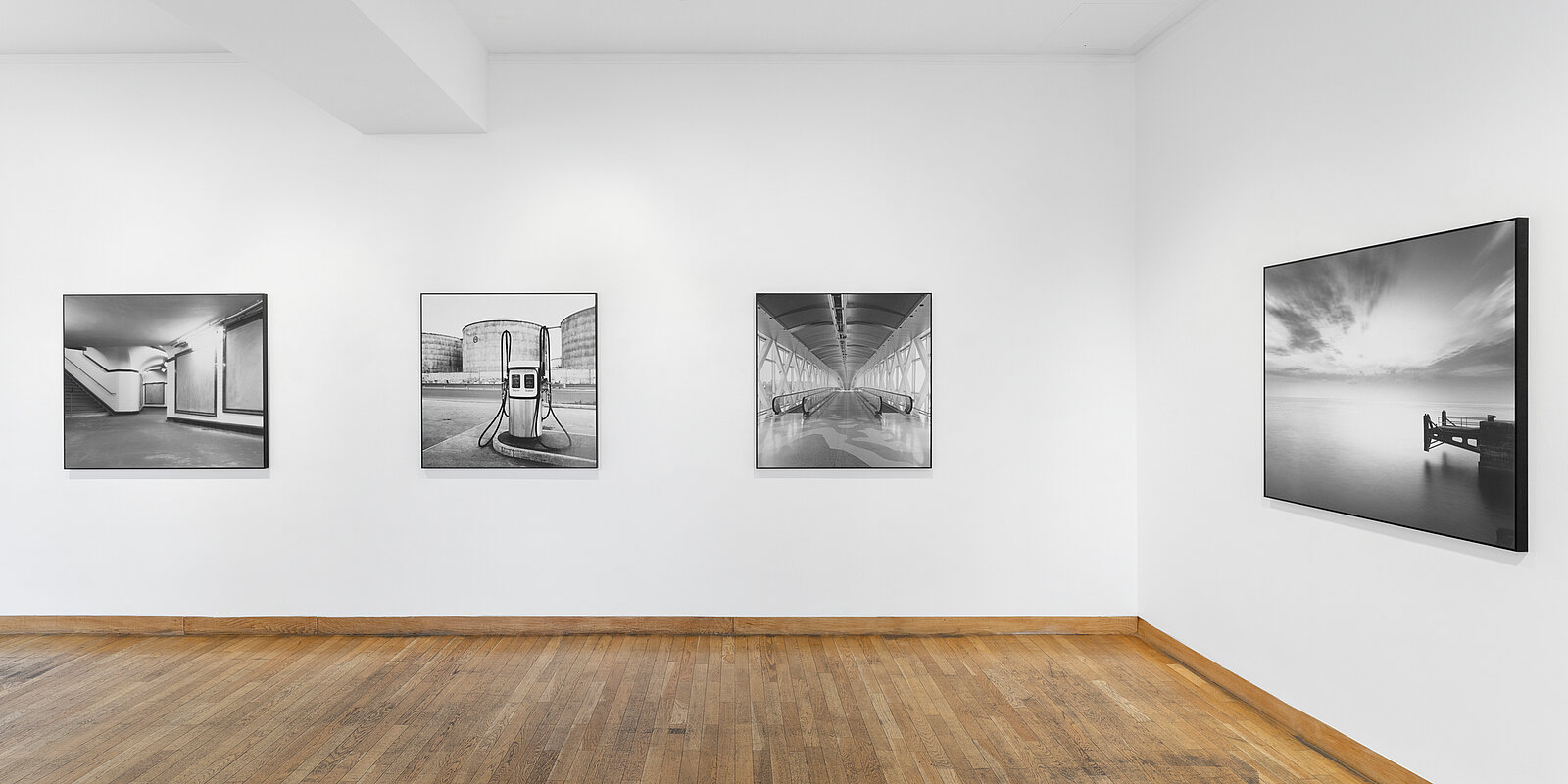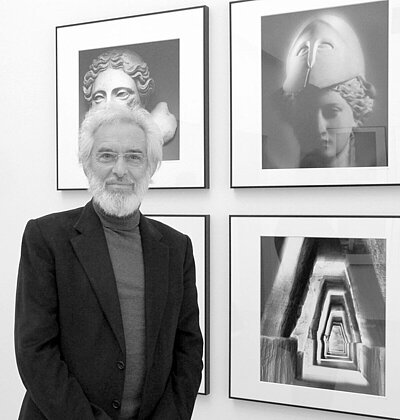Mimmo Jodice: ATTESA
![[Translate to English:] [Translate to English:]](/fileadmin/_processed_/c/4/csm_Mimmo_Jodice-Attesa_GKG_Paris_2022-view_01_c921eb3713.jpg)
Galerie Karsten Greve Paris
Tuesday - Saturday 10am to 7pm
Opening on Saturday, November 5, 2022 from 6 - 8 pm.
The exhibition will be extended until February 18, 2023.
“My work involves projecting in the mind, achieving it in the form of a photograph and then printing it in the highest possible quality. Nothing else matters or, if it does, it is insignificant.” - Mimmo Jodice
Galerie Karsten Greve is pleased to present ATTESA, a solo show by the Italian artist Mimmo Jodice, which unveils twenty works from his last project Attesa (waiting). This selection is completed by fifteen works from the project Natura (nature).
Mimmo Jodice explores the world that surrounds us, lingering on the thresholds of a time undefined. In his black and white photographs, past, present and future intertwine, abandoning all spatio-temporal markers to reach a dimension suspended between what is real and what only seems real. Attesa, his latest project, is the culmination of the research which the artist has been engaged in since the late 1980s, when he chose to forego the human form. From that moment on, and for over 30 years, time and experience have been the focus of his research.
Mimmo Jodice sees the Attesa project as not just a subject or method of investigation, but rather as a way of transforming the very idea of photography into an intellectual and artistic practice, imbued with all the poetic sensibility of the artist. In a world that no longer sleeps, he dwells on the awareness of time. Rows of waiting chairs, open windows, shadows, here only for a brief instant, sublime in their fugacity. A sense of waiting is present in every facet of the works shown, from the actual taking of the photograph to the subject: patiently waiting for the perfect light before clicking the shutter, waiting for the desired balance of detail and nuances in the dark room. The waiting that is apparent in the subjects themselves – empty chairs, deserted streets, open windows, desolate urban labyrinths.
Attesa. Opera 1 (2000) appears frozen in the moment. Outside time, cadenced by the horizontal diagonals of sea and sky, the composition teeters on abstraction – as calm and unruffled as the surface of the water and the halo of light that fills the horizon. Oblivious to the passage of time, the artist resounds with the peace and silence emanating from it. A simple beach chair, turned towards the infinite, is the only sign of a presence – from the past, or perhaps from the future. The tension between this silence and the wait for something unknown has reached a paroxysm, further amplified by the absence of markers, forcing us, too, to slow down and wait.
In the Natura project, time remains uncertain, in a suspended state. Presence instead becomes the focus of Jodice's gaze. Ancient ruins are host to flourishing vegetation, whose resistance defies civilisation. In Tempio di Serapide, Opera I, Pergamo (1994), for example, plants are practically bursting out of the shot, completely taking over the space, both inside and outside the frame. The two series complement each other through their oppositions.
One of the greatest photographers of his generation, Mimmo Jodice is constantly reinventing photography, helping to free it from the boundaries of purely documentary interpretation and emphasize its representative potential. As for as Attesa, Jodice chose to use carbon printing; the first photographic process not to use silver. Patented in 1855 by Louis-Alphonse Poitevin and known to be extremely stable, it was the most widely used process in the nineteenth century. This technique enables Jodice to obtain highly contrasted images which offer absolute clarity, thus transforming the camera into what he calls “a time machine”.
“What was I thinking before I lost myself in looking?” Fernando Pessoa’s words give us the greatest freedoms; the freedom to look but most of all to see and to feel the time passing, as it lightly makes its presence felt to anyone who attempts such an exercise.
“The name of Photography’s noeme will therefore be: “That-has-been” […] what I see has been here, in this place which extends between infinity and the subject (operator or spectator); it has been here, and yet immediately separated; it has been absolutely, irrefutably present, and yet already deferred”, writes Roland Barthes in his 1980 work, Camera Lucida. In Mimmo Jodice’s photographs, space-time remains frozen by the wait for a future that never comes; memories of “what has been, is, or will be” that come in support of the punctum, a definition by Barthes that references the emotions and subjective sensibilities evoked by an image, completely leaving aside its documentary properties, to concentrate solely on the essential, the most intimate, the most overwhelming.
While they may at first sight appear quite different, both the Attesa and the Natura projects reveal the essence of Jodice’s visionary approach, in which he creates a reality beyond reality. “Describing his photos is like trying to summarise the theme or subject of a poem, only to realise once again that the beauty of any poem lies precisely in what can only be told through the medium of the poem itself."




